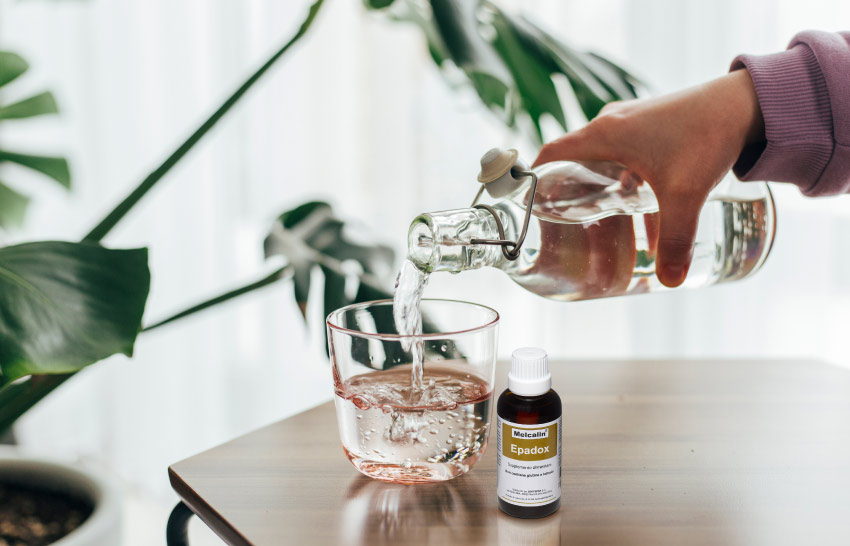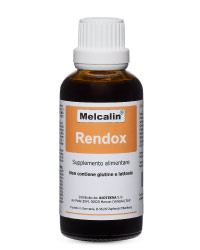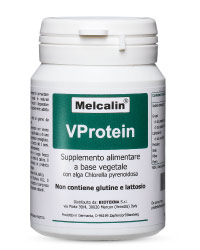Introduction
The activities carried out by the liver in the body are numerous and include thestorage storage of glycogen (Gly)1, the synthesis of plasma proteins including albumin and coagulation factors, the production of bile, the detoxification of toxins, slag and other harmful elements introduced into the body with food or because of environmental pollution and is essential in drug metabolism (liver makes water-soluble these compounds facilitating their renal elimination).
Given the many actions that this important body carries out it is necessary to maintain its functional status with a proper lifestyle and if that is not enough you can supplement the diet with specific products that help to maintain or even improve the architecture. There are plants with proven efficacy for liver problems such as chicory, turmeric and artemisia which may be indicated when the liver function is impaired or simply when the liver is in a situation of overload due for example to a pharmacological therapy. It is known that most of medications is metabolized in the liver and, therefore, each drug does increase the workload of the liver and the greater is the combination of drugs in a polypharmacy therapy the greater the overload that this organ will face. It is estimated that the drug-induced liver injury is up to 7% of all adverse reactions to these substances can cause: this is because the drugs are likely to cause direct damage to hepatocytes, the bile ducts and vascular structures and can interfere with the flow of bile. Therefore, a supplementation with plant products is an excellent natural support especially if you are facing a pharmacological therapy.
Synthesis function (protein, carbohydrate and lipid metabolism)
The liver is important for the protein metabolism: on the contrary of the muscle cells that synthesize protein for their exclusive use, hepatocytes synthesize proteins important for the functions of the whole organism in fact most of the circulating protein is synthesized precisely from this organ. A liver is produced transport proteins (albumin, transferrin, lipoproteins), immune system proteins (proteins of the complement system, acute phase proteins) and clotting factors. A protein synthesized during an acute event is the C-reactive protein hepatocellular whose production is stimulated by pro-inflammatory cytokines such as TNF-alpha, IL-6 and IL-125 while one of the most abundant proteins in the plasma, the production of which reflects the ability of hepatic synthesis, isalbumin that among the different actions also performs the function of transmission and maintenance of intravascular oncotic pressure. (Albumina: Azioni e Alterazioni. Benefici di una supplementazione con albumina tamponata: Pralbumina www.portaledinu.it/press).
I The liver is essential for the metabolism of carbohydrates: in order to maintain the glucose levels constant within the physiological range, the liver functions as a structure capable of storing and dispose glucose to need. Once the glucose in the liver undergoes a series of transformations by which is stored in the form of glycogen, when the glucose levels in the blood drop, glucagon stimulates glycogen to be converted back into glucose thus maintaining adequate values of glycaemia.
The liver plays a key role in lipid metabolism being the center of the synthesis of fatty acids, cholesterol and VLDL (very low density lipoprotein)12,13,14,15.
Storage
The glycogen (Gly)1 is a form of glucose deposit that can be mobilized quickly. This is a very large branched polymer that can be cleaved to produce glucose molecules when energy is required.
The two major sites of glycogen storage are the liver and skeletal muscle. The concentration of glycogen is higher in the liver compared to muscle (10% against 2% by weight), but more glycogen is stored in skeletal muscle because of its greater mass.
In the liver, the synthesis and degradation of glycogen are adjusted to maintain required glycemia in order to meet the needs of the organism as a whole in while the muscle these processes are regulated in order to meet the energy needs of the muscle itself 18.
The liver acts as a storage area also of some vitamins, such as A, D and B12 and iron.
Detoxification function / drug metabolism
The liver is the central organ of detoxification of exogenous and endogenous substances. The water-soluble substances are eliminated by the kidneys and the fat-soluble substances are transformed in the liver before being eliminated. In the liver bio-transformations can lead not only to the detoxification but, in certain cases, also to the activation of some molecules (eg. Prodrugs). The detoxification process can be divided into several stages: in one of the stages the lipophilic substances are conjugated with a reactive group which improves the molecular polarity (this stage can be sufficient for the substance to become hydrophilic and to facilitate the renal elimination). In another stage the products that are formed in the first phase are conjugated with substances such as glucuronic acid or some amino acids to create molecules characterized by improved hydrophilicity, which then may be excreted even better from the liver into the intestinal lumen by means of the secretion of bile.
Some molecules harmful for our body that are eliminated by the liver are alcohol and ammonia. The alcohol degradation involves the activation of alcohol dehydrogenase enzymes that metabolize alcohol to acetaldehyde and then into acetic acid, which will later be integrated as acetyl-CoA in the citric acid cycle. The alcohol intake for long periods and at high doses may constitute a serious damage to the organism in fact this substance is able to induce the synthesis of a subtype of cytochrome (CYP2E1) that releases reactive oxygen species thus contributing to stress oxidative addition, if the liver is unable to dispose of the excess of ethanol, will pour circulating acetaldehyde which happens to be a highly toxic substance for the entire body.
Ammonium is formed from the degradation of proteins and urea. The liver produces and metabolizes the ammonium by means of two detoxification systems: the urea / ornithine cycle and the cycle of glutamate.
Statistics drug toxicity
Through the portal circulation (which conveys to the liver the blood from the gastro-intestinal tract), the liver is constantly exposed to xenobiotics ingested and consequently plays a predominant role in drug biotransformation. The liver damage induced by medications represents up to 7% of all adverse reactions that may occur after drug intake; This occurs because the drugs are able to cause direct damage to hepatocytes, bile ducts and vascular structures and can interfere with the flow of bile. The most commonly encountered manifestations include hepatitis, cholestasis, steatosis, cirrhosis, vascular and neoplastic lesions and fulminant hepatic failure 16,17.
It should be added that the drug toxicity can be exacerbated by factors such as age and liver disease such as cirrhosis in which there has been a change in blood flow and hepatic impairmentthat alter the drug availability: Aging brings in many cases to a certain decline in liver function that causes variations from 25% to 35% in the blood flow of the liver, the liver mass and metabolism of cytochrome P450. There are also other factors that contribute to the high incidence of drug induced toxicity in the elderly, such as decreased renal function, increased fat mass that causes an altered bioavailability of the drug, the decrease in lean body mass and polypharmacy ; it is estimated that in the geriatric population from 20% to 25% of all cases of hepatitis are induced by the drug, while for all age groups the incidence varies from 2% to 5% of all hospitalizations for jaundice19.
Hepatoprotective activity of some compounds
The Chicory has several properties including that of lower blood sugar, lipids, reduce uric acid and also has Hepatoprotective activity. It is established that therapy with chicory extracts leads to normalization of some morphofunctional characteristics of the liver (decreases of necrosis zones and increases the protein synthesis activity): in experiments where hepatitis with carbon tetrachloride was induced were measured values of certain liver enzymes such as aspartate aminotransferase (AST), alanine transaminase (ALT) and alkaline phosphatase (ALKP) noting that their increase was greatly reduced with the administration of chicory extracts indicating, not only that its compounds are capable of improving the hepatic function but also that the plant has a powerful anti-hepatotoxic activity comparable to that of silymarin (strong Hepatoprotector).
Also a protective activity against oxidative damage of DNA induced by free radicals and the inhibition is dose-dependent type was observed in vitro 2,3,4,5,6.
Turmeric is able to prevent oxidative damage due to its anti-oxidant properties. Animal studies in which it was induced hepatitis have demonstrated the hepatoprotective effect of the extract of this root: the preparation has increased significantly the elimination of the marker substance administered recommending it as a treatment to improve liver function due to its action of rapid detoxification.
Curcumin is a component extracted from the roots of Turmeric longa which exhibits strong antioxidant and hepatoprotective activities. Researches have shown beneficial effects on hepatocytes that are manifested by a significant increase in metabolic activity of the cells and an improvement of oxidative stress. Other studies have evaluated the protective effects of Tumeric in liver injury induced by measuring the aspartate aminotransferase (AST) and alanine aminotransferase (ALT): both values were significantly decreased in the group that had taken turmeric extract. In addition, the antioxidant enzymes such as superoxide dismutase, catalase and glutathione peroxidase were significantly increased in the group that had taken turmeric extract indicating that the extract has significant hepatoprotective effects7,8,9,10.
Also the hepatoprotective effect of the extract of Artemisia vulgaris has been proven, confirmed by histopathology of the liver that showed improved liver architecture and decreased necrosis areas and this has attested in a scientific manner the validity of this plant already used by tradition for liver disorders11.
Conclusions
The liver performs many functions in our organism being the seat of synthesis, transformation, detoxification and storage; it is an organ constantly exposed to substances that we introduce from the outside and its importance in the detoxification processes is considerable. To keep it in good condition through a correct lifestyle that avoids overeating and excessive alcohol intake is important, but very often it is not enough due to other factors beyond our control, it is sufficient to think about the medication that you have to faces following a pathology; the greater the amount of the necessary drugs the greater will be the resulting liver overload. In order to support the liver in this excess of work it is possible to act with a natural strategy using proven herbs such as chicory, turmeric, Artemisia that are able to protect the liver and improve any damaged areas.
Melcalin Epadox contains chicory extracts, turmeric and artemisia which as seen, have proven effectiveness in improving the biochemical parameters as well as having an excellent antioxidant effect2,3,4,5,6. Chicory and turmeric are useful for improving oxidative stress having both antioxidant activity, artemisia, whose hepatoprotective properties were already known and exploited by tradition, it has also shown after clinical studies its ability to improve the hepatic architecture and reduction of necrosis zones 11.
Citrus sinensis, Cnicus Benedictus and Melissa officinalis extracts help to improve the action of the compound by increasing the antioxidant effect20,21,22,23,24.
The administration includes 30 drops of Epadox diluted in a half-liter bottle of water, to which is recommended to add even 30 drops of Rendox to drink in the morning in order to facilitate better drainage.





